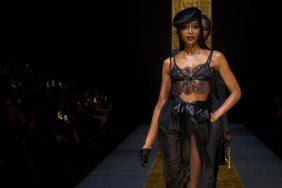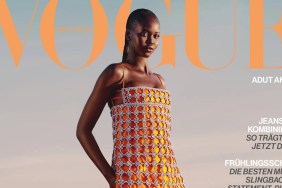WWD is calling it “the fall of apparel.”
A report released by Credit Suisse this week found that the growing accessories market is stealing away mall sales from fashion apparel at a significant rate.
The actual numbers, as reported by WWD: From 2007 to 2012, apparel sales at American malls had a compounded annual growth rate of 0.8%, compared to a 5% growth rate during the same period for accessories and beauty products; apparel lost two points of its share of mall sales (down to 58%) while accessories gained five percentage points (up to 32%).
We’ve been reading about the declining apparel market and booming accessories sector for a while. Last year, The New York Times reported on the shift, attributing the uptick in accessory sales to a more frugal recession-era buying public. Both WWD and market analyst IBISworld support the view that the lower point of entry makes accessories well-suited to the stagnant economy and lackluster consumer confidence.
I find the Great Recession argument deeply unsatisfying. The total revenue for all apparel (including accessories) in the United States was $482 billion last year. According to the EPA, we throw out 68 pounds of clothing and textiles per person per year. Yes, apparel is not performing according to the wishes of executives and market analysts, but — and especially in the wake of the tragedy in Bangladesh, where the death toll has maxed out at 1,127 — it seems crazy to worry whether people are buying enough stuff.
The current “hot” accessories market has been in the works for the past couple decades, from when fashion companies repositioned themselves as global brands. In Deluxe: How Luxury Lost Its Luster, a representative from BETC Luxe, a creative strategies agency, tells reporter Dana Thomas how Tom Ford‘s success at Gucci in the 1990s created a model for accessories-based revenue which essentially made clothing sales irrelevant to major fashion brands: “[Ford] made beautiful dresses, but he always stuck a great bag on them. How many $2,000 white satin gowns are you going to sell? Luxury brands know that clothing is a loss. The bag is the introduction to the brand. Even if it’s a ready-to-wear ad campaign, what you’re really selling is the handbag. Thanks to Tom Ford, pret-a-porter is the decor for the accessory.”
In its Annual Report for 2012, H&M posted a 29.76% increase in revenue over the past year. A 2010 report by New York’s Economic Development Corporation called Fashion.NYC.2020 showed similar growth over a multi-year period for other fast fashion outlets like Forever 21, Uniqlo and Zara.
Clearly, people are buying clothes. We’re just not buying as many from companies that are secretly just trying to get us to buy sunglasses.





